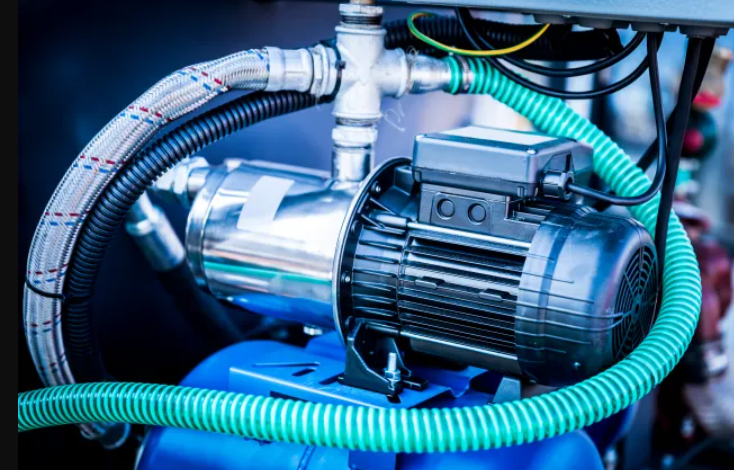How to Choose the Right Vacuum Ejectors

Selecting the right vacuum ejectors can make a significant difference in the performance and efficiency of your industrial system. Whether you’re working in packaging, material handling, or automation, choosing an ejector that matches your specific application requirements ensures optimal suction power and energy use. In this article, we’ll guide you through the key factors to consider such as vacuum level, air consumption, and installation setup, so you can confidently select the ideal vacuum ejector for your needs.
What is a Vacuum Ejector?
A vacuum ejector is a device that creates a vacuum (low pressure) using a high-pressure fluid, usually compressed air or steam. Unlike mechanical vacuum pumps, ejectors have no moving parts, so they need less maintenance and are less likely to wear out.
How It Works
- Motive Fluid Through Nozzle: High-pressure fluid enters the ejector and flows through a narrow nozzle.
- Venturi Effect / Suction: The fluid speeds up in the nozzle, dropping the pressure and creating a low-pressure area that sucks in surrounding air or gas.
- Mixing: The sucked-in fluid mixes with the high-speed fluid in a chamber, transferring momentum.
- Diffuser / Recovery: The mixed flow slows down in a diffuser, converting velocity back into pressure for discharge.
High pressure creates high-speed airflow, which generates suction, mixes fluids or gases, and then allows pressure to recover.
Key Features & Parameters
- Entrainment Ratio: How much air or gas is sucked in compared to the fluid that drives the ejector.
- Area Ratio: The size relationship between the nozzle and the mixing chamber, affecting performance.
- Motive Pressure & Velocity: Higher pressure or speed of the driving fluid increases suction, within practical limits.
A vacuum ejector works using the Venturi effect. Fluid speeds up as it passes through a narrow section, creating low pressure that pulls in air or gas. The fluids mix and then leave at a normal pressure.
Key Factors to Consider When Choosing a Vacuum System
- Vacuum Level: Decide the required suction strength. Use pumps for high and stable vacuum tasks, such as chemical processing or vacuum forming. Ejectors are ideal for medium vacuum needs that require quick response and easy installation. Blowers work best for low vacuum or continuous airflow applications, like drying or aeration. Selecting the right vacuum level ensures your system operates reliably and efficiently.
- Energy Efficiency: Check how much energy the system uses. Pumps are generally more energy-efficient for continuous use because they rely on mechanical power. Ejectors use compressed air constantly, which can raise energy costs. Picking an energy-efficient system helps reduce operating costs.
- Maintenance Needs: Think about how much maintenance you can manage. Ejectors need very little upkeep because they have no moving parts. Pumps and blowers require regular maintenance, like inspecting components and replacing filters. Choosing a system that fits your maintenance capacity helps avoid downtime and keeps operations running smoothly.
- Operational Environment: Consider the conditions where the vacuum system will operate. Ejectors perform best in clean, controlled spaces. Pumps and blowers are more durable and can handle dust, moisture, and harsh industrial environments. Choosing a system suited to its environment ensures reliable performance over time.
- Response Time: If your process needs a vacuum quickly, ejectors are ideal because they start working almost instantly. Pumps and blowers take longer to reach the desired vacuum, making them slower for fast-paced applications.
Types and Applications of Vacuum Ejectors
Vacuum ejectors deliver efficient and reliable vacuum without any moving parts, minimizing maintenance and enhancing durability. The two main types are air ejectors and steam ejectors, each suited for different tasks and environments.
- Air Ejectors
Air ejectors use compressed air to generate a vacuum through the Venturi effect.
How It Works:
- Compressed air passes through a narrow nozzle, increasing its speed and lowering its pressure.
- This generates a low-pressure area that pulls in surrounding air or gas.
- The mixed air passes through a diffuser, slowing down while pressure is restored, and is then safely discharged.
Benefits:
- Simple Design: No moving parts → minimal maintenance and fewer breakdowns.
- Fast Response: Quickly generates a vacuum, ideal for processes that cycle rapidly.
- Compact and Lightweight: Easy to install even in small spaces.
Applications:
- Packaging Machines: Vacuum sealing and forming.
- Robotic Pick-and-Place Systems: Handling components in electronics or food industries.
- Laboratory Equipment: Provides a clean, oil-free vacuum source.
- Steam Ejectors
Steam ejectors generate a vacuum using high-pressure steam, making them well-suited for high-temperature and corrosive environments.
How It Works:
- High-pressure steam expands through a nozzle, converting pressure into high speed.
- The fast steam draws in gases or vapors from the process.
- The mixture flows through a diffuser, where it slows down, pressure is restored, and it is safely discharged.
Benefits:
- High Temperature Resistance: Works with hot or corrosive gases.
- Robust and Durable: Handles large volumes, suitable for heavy-duty applications.
- No Moving Parts: Low maintenance and reliable operation.
Applications:
- Chemical Plants: Vacuum distillation, evaporation, and drying.
- Power Generation Condensers: Keep a vacuum in steam turbines to boost efficiency.
- Petrochemical Industries: Provides continuous, reliable vacuum for industrial processes.
See also: Tea Shops to Tech Startups: How Microloans Support India’s Daily Life
Maintenance and Efficiency Tips for Vacuum Ejectors
To keep vacuum ejectors running smoothly, extend their lifespan, and maintain efficiency, follow these guidelines:
Maintenance Tips
- Inspect nozzles and passages: Check for wear, erosion, or blockages that can reduce suction.
- Keep compressed air clean: Moisture, oil, or debris can clog or damage the ejector.
- Check seals, gaskets, and fittings: Even small leaks lower vacuum performance and increase energy use.
- Clean or replace filters/silencers: Dirty filters reduce airflow and efficiency.
- Monitor system parameters: Track vacuum levels, air pressure, and flow to detect deviations early.
- Implement preventive maintenance: Keep regular inspection and replacement records to prevent issues, reduce downtime, and extend vacuum system life.
Efficiency Tips
- Optimize air pressure and flow: Set your vacuum ejector to the correct air pressure and flow to save energy, reduce wear, and improve efficiency.
- Minimize suction-side restrictions: Keep suction piping short and straight to reduce resistance, improve response, and save energy.
- Ensure high-quality air supply: Removing moisture and contaminants prevents clogging and wear.
- Use condition monitoring: Track vacuum depth, flow, and energy use to identify inefficiencies early.
Regular maintenance and efficiency-focused practices help vacuum ejectors work reliably and cost-effectively. Keeping the air clean, piping well-designed, and performing regular inspections helps vacuum systems run efficiently or avoid unexpected breakdowns.
Conclusion: Vacuum Ejectors
Vacuum ejectors are essential in modern industries because they provide a simple, efficient, and low-maintenance way to create a vacuum. Their compact size, quick response, and absence of moving parts make them ideal for applications that demand speed and reliability, such as automation and packaging.
When choosing a vacuum ejector, it’s important to consider factors like the required vacuum level, energy use, maintenance ability, and working environment.
- Air ejectors are perfect for clean, small-scale, and fast operations.
- Steam ejectors are better suited for heavy-duty, high-temperature, or corrosive processes.
Vacuum ejectors operate reliably and efficiently when properly set up, supplied with clean air, and maintained regularly.







